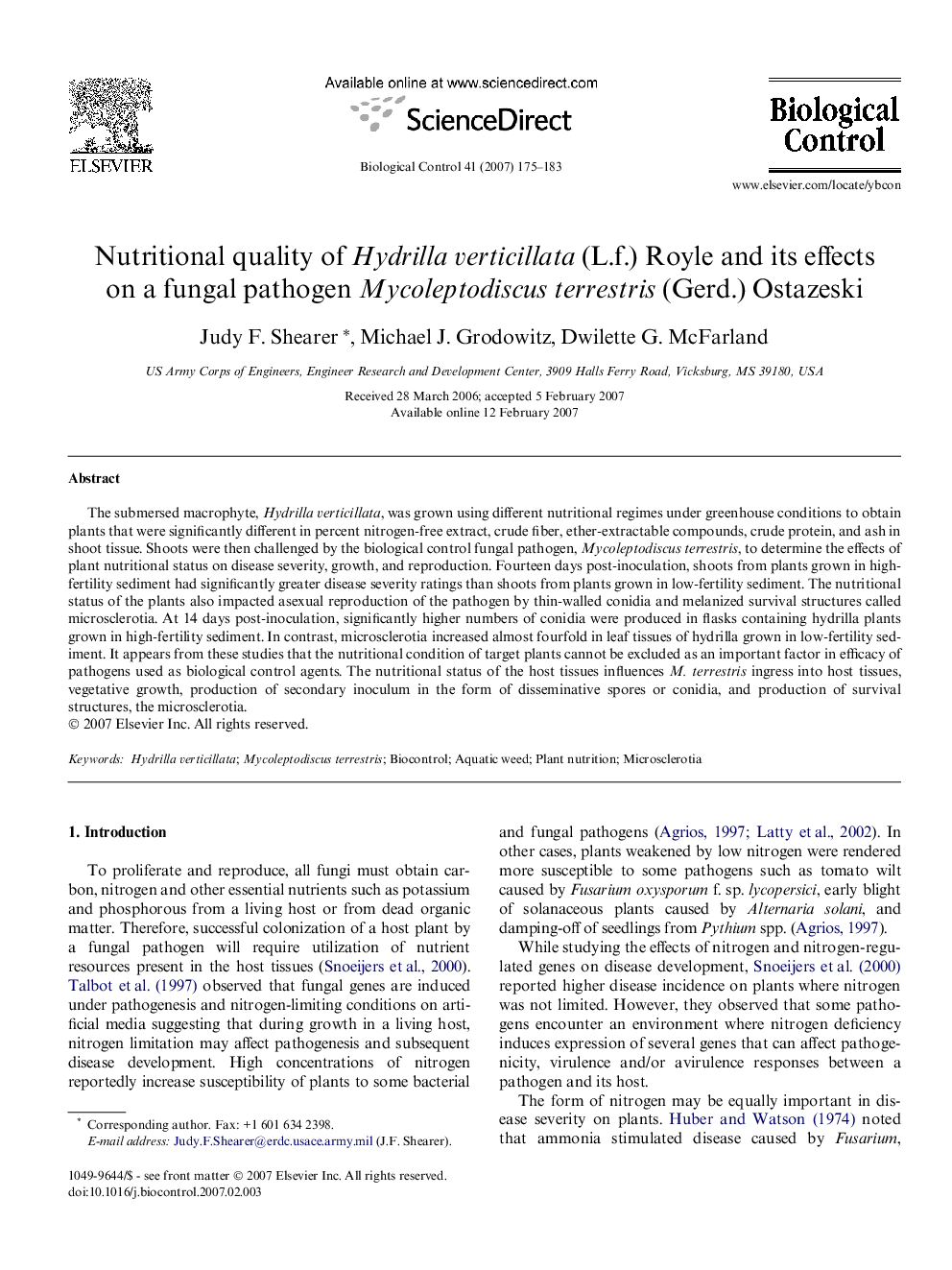| Article ID | Journal | Published Year | Pages | File Type |
|---|---|---|---|---|
| 4505080 | Biological Control | 2007 | 9 Pages |
The submersed macrophyte, Hydrilla verticillata, was grown using different nutritional regimes under greenhouse conditions to obtain plants that were significantly different in percent nitrogen-free extract, crude fiber, ether-extractable compounds, crude protein, and ash in shoot tissue. Shoots were then challenged by the biological control fungal pathogen, Mycoleptodiscus terrestris, to determine the effects of plant nutritional status on disease severity, growth, and reproduction. Fourteen days post-inoculation, shoots from plants grown in high-fertility sediment had significantly greater disease severity ratings than shoots from plants grown in low-fertility sediment. The nutritional status of the plants also impacted asexual reproduction of the pathogen by thin-walled conidia and melanized survival structures called microsclerotia. At 14 days post-inoculation, significantly higher numbers of conidia were produced in flasks containing hydrilla plants grown in high-fertility sediment. In contrast, microsclerotia increased almost fourfold in leaf tissues of hydrilla grown in low-fertility sediment. It appears from these studies that the nutritional condition of target plants cannot be excluded as an important factor in efficacy of pathogens used as biological control agents. The nutritional status of the host tissues influences M. terrestris ingress into host tissues, vegetative growth, production of secondary inoculum in the form of disseminative spores or conidia, and production of survival structures, the microsclerotia.
